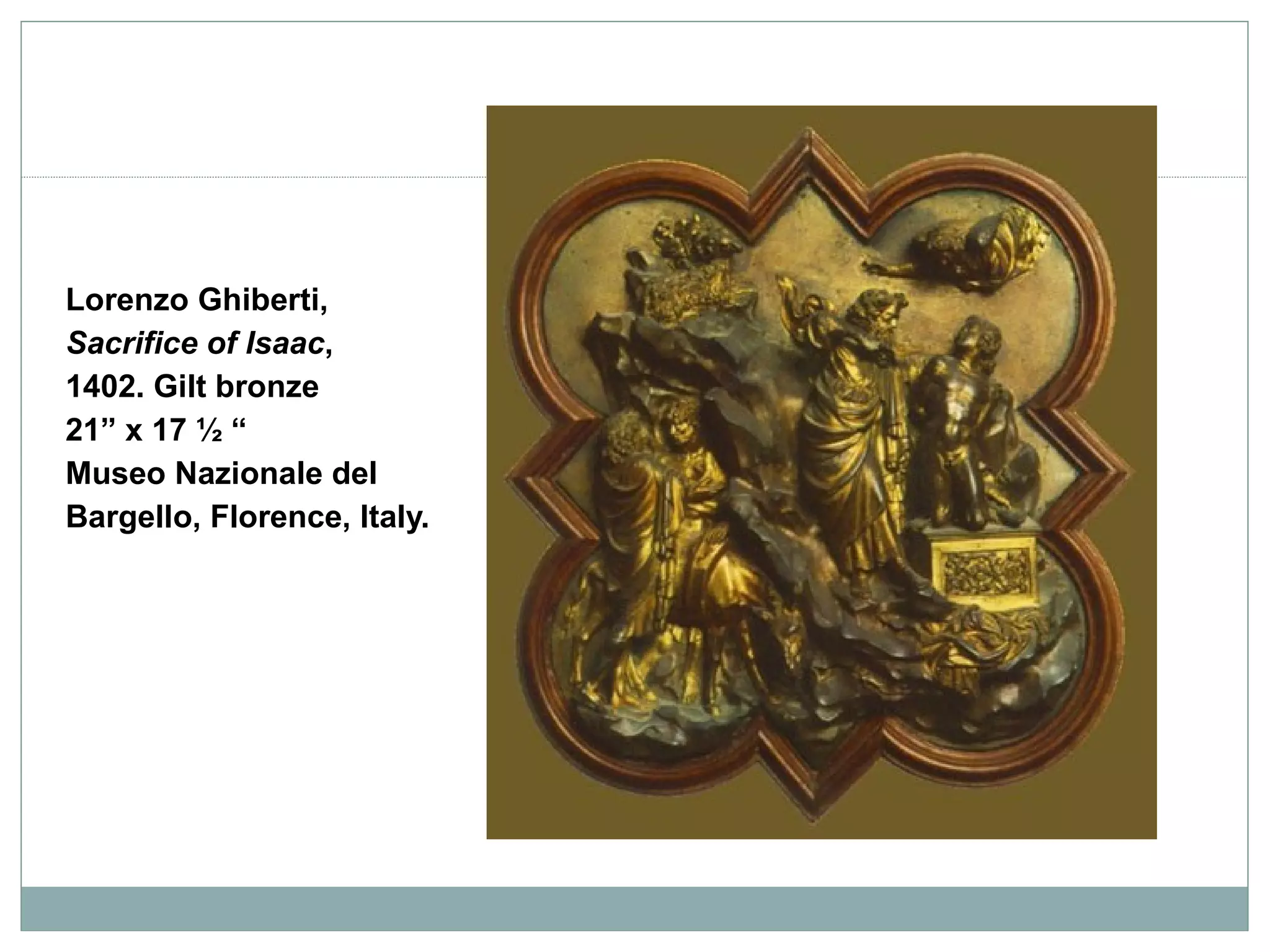The document provides context on the Early Renaissance period in three paragraphs. It discusses how the Renaissance began in Italy between 1400-1600 as an artistic revival centered on classical Greco-Roman styles and ideals. Key factors that influenced this rebirth were the decline of Constantinople which brought Greek scholars to Italy, and the rediscovery of classical texts. The arts during this period, especially painting, sculpture and architecture, began embracing principles of realism, anatomy, and linear perspective that had been lost since antiquity. Major artists like Masaccio and Botticelli produced influential works that advanced these naturalistic styles and techniques.























































